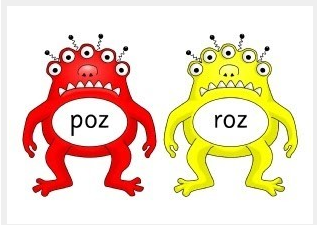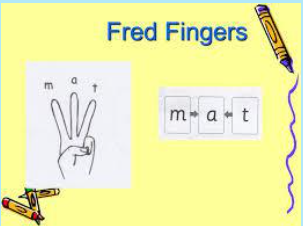Phonics
Subject Leader - Mrs L Foster
Rationale:
At Heygarth Primary school we recognise the importance of teaching a systematic synthetic phonics programme to build children’s speaking and listening skills in their own right, as well as to prepare children for learning to read by developing their phonic knowledge and skills.
Our fundamental aim is to teach every child to read as quickly as possible, and be enthused about reading. We strive to teach children to read accurately and fluently with good comprehension, as well as develop the habit of reading widely and often, for both pleasure and information. These essential skills not only unlock doors to the rest of the curriculum, but also have a huge impact on children’s self-esteem and future life experiences
Reading opens the door to learning. A child who reads a lot will become a good reader. A good reader will be able to read more challenging material. A child who reads challenging material is a child who will learn. The more a child learns, the more he or she will want to find out.
As a school we have chosen Read Write Inc Phonics as it is a complete literacy programme which helps all children learn to read fluently and at speed so they can focus on developing their skills in comprehension, vocabulary and spelling. The programme is designed for children aged 4-7. However, at Heygarth we begin the programme in F1 (if we feel the children are ready) and will continue teaching RWI to children beyond the age of 7 if they still need support in their reading.
Using RWI, the children learn to read effortlessly so that they can put all their energy into comprehending what they read. It also allows them to spell effortlessly so that they can put all their energy into composing what they write.
At Heygarth Primary School we aim to create life-long learners who have a passion for reading for the rest of their lives. Reading for pleasure is a key aspect of the curriculum and the basis for teaching children to read.
Information for Parents:
What does Read Write Inc look like at Heygarth?
How RWInc will be taught.
When using RWI to read the children will:
learn 44 sounds and the corresponding letter/letter groups using simple picture prompts
learn to read words using Fred Talk
read lively stories featuring words they have learned to sound out
show that they comprehend the stories by answering questions.
When using RWI to write the children will:
learn to write the letters/letter groups which represent 44 sounds.
learn to write words by saying the sounds in Fred Talk
write simple sentences
Children are taught phonics daily in groups with other children working at the same ability as they are. Teachers assess children’s phonic and reading progress regularly. For those children who require extra support we provide additional sessions to the daily phonics lesson all children receive.
Year 1 children undertake an unseen government 'Phonics Screening' which requires them to read, using their phonics skills, real and non-real words. Results are reported to parents.
Foundation 1 (Nursery)
Children focus on Phase 1 phonics - listening to and discriminating sounds.
When appropriate, children will be introduced to the initial sounds in short five minutes sessions
Foundation 2 (Reception)
In Foundation 2 (Reception) all children will learn how to ‘read’ the sounds in words and how those sounds can be written down.
Reading (F2 0nwards)
The children:
learn 44 sounds and the corresponding letters/letter groups using simple picture prompts
learn to read words using Fred talk and sound blending
read from a range of storybooks and non-fictions books matched to their phonic knowledge
work well with partners
develop comprehension skills in stories by answering ‘Find It’ and ‘Prove It’ discussion questions
Writing
The Children:
learn to write and form the letters/letter groups which represent the 44 sounds with the help of fun phrases
learn to write words by using Fred Talk
learn to build sentences by practising sentences out loud before they write
Talking
The children work in pairs so that they:
answer every question
practise every activity with their partner
take turns in talking and reading to each other
develop ambitious vocabulary
5 Key Principles
Five key principles underpin the teaching in all Read Write Inc. sessions:
Purpose – know the purpose of every activity and share it with the children, so they know the one thing they should be thinking about
Participation – ensure every child participates throughout the lesson. Partnership work is fundamental to learning
Praise – ensure children are praised for effort and learning, not ability
Pace – teach at an effective pace and devote every moment to teaching and learning
Passion – be passionate about teaching so children can be engaged emotionally.
We use pure sounds (‘m’ not’ muh’,’s’ not ‘suh’, etc.) so that your child will be able to blend the sounds into words more easily.
At school the children learn to speak in sounds (segmenting) with a frog named Fred who is an expert on sounding out (segmenting) words! This is called ‘Fred Talk’. E.g. m-o-p, c-a-t, m-a-n, sh-o-p, b-l-a-ck.
The children are taught the sounds in 3 sets.
Step 1:
Set 1 Sounds are taught in the following order:
masdt
inpgo
ckub
felhr
jvywzx
sh, th, ch, qu, ng, nk
The children are also taught rhymes to help them form the letters correctly.
Set 1 Sound Rhymes for writing only
m -Maisie, mountain, mountain
a - Round the apple, down the leaf
s - Slither down the snake
d - Round the dinosaur’s bottom, up his neck and down to his feet.
t- Down the tower, across the tower,
i - Down the insects body, dot for the head.
n -Down Nobby and over the net.
p - Down the plait, up and over the pirates face.
g - Round the girls face, down her hair and give her a curl
o - All around the orange
c - Curl around the caterpillar
k - Down the kangaroos body, tail and leg
u - Down and under the umbrella, up to the top and down to the puddle
b- Down the laces, over the toe and touch the heel
f - Down the stem and draw the leaves
e -Slice into the egg, go over the top, then under the egg
l - Down the long leg
h - Down the horse’s head to the hooves and over his back
r - Down the robot’s back, then up and curl
j - Down his body, curl and dot
v - Down a wing, up a wing
y - Down a horn, up a horn and under the yak’s head.
w - Down, up, down,
z - Zig-zag-zig
x - down the arm and leg and across the other way
qu - Round the queen’s head, up to her crown, down her hair and curl
sh, th, ch, ng, nk do not have a mnemonic for writing them.
Step 2:
The children are then taught
Set 2 Sounds – (the long vowels.)
ay, ee, igh ,ow, oo, oo, ar, or, air, ir, ou, oy
When they are very confident with all of set 1 and 2 they are taught
Set 3 Sounds.
ea, oi, a-e, i-e, o-e, u-e, aw, are, ur, er, ow, ai, oa, ew, ire, ear, ure,
Nonsense words (Alien words)
As well as learning to read and blend real words children will have plenty of opportunities to apply their sound recognition skills on reading ‘Nonsense words’. These words will also feature heavily in the Year One Phonics Screening check in the summer term.
Step 3:
Children will be introduced to ‘Ditty books’ when they successfully begin to read single words.
Children use sound-blending (Fred Talk) to read short ditties.
Children will then be challenged to use their developing phonic knowledge to write short sentences.
Within all the books children will have red and green words to learn to help them to become speedy readers.
Red words are words that are not easily decodable and challenge words to extend children’s vocabulary.
Green words are linked to the sounds they have been learning and are easily decodable.
Dots and dashes represent the sound each letter makes.
During the RWInc session children will read the book three times and at each new reading they will have plenty of opportunities to practise using their developing comprehension skills. You may have heard your child talking about ‘hold or build a sentence’.
Hold a sentence is an activity that encourages children to remember a whole sentence while focusing on spelling and punctuation.
Build a sentence is to give children the opportunity to create their own sentence to that shows the meaning of a word and edit a sentence allows the children to critique a sentence using their knowledge of spelling punctuation and grammar. Children complete a longer piece of independent writing, which gives them the opportunity to show off their creativity and to practice their spelling, grammar and punctuation.
Spelling
Spelling is part of the RWInc programme. Children will use ‘Fred fingers’ to first sound out a word before they write it down, this way of teaching spellings allows children to use Fred fingers whenever they get stuck with spelling a word. Children pinch each sound on their fingers before writing the word.
Assessment:
Throughout Early Years and KS1, children are assessed formally each half term by the reading leader and placed in specific focus groups which means that children’s individual needs for phonics are being met alongside children of the same ability. Daily observations and formative assessments of children’s phonic knowledge, coupled with a robust assessment approach each half term, ensures children are given the correct book which is carefully matched to their phonic understanding, and the acquisition of sounds which have been taught. Equally, this means children are issued with the correct home reading books for them to enjoy at home, allowing them to experience early reading success, gain confidence and consolidate the learning that takes places in school.
However, some children may need extra support and the class teacher will talk to you about this.
To help at home:
Your child will start to bring books home when they are confident readers.
Each week they will bring home the book they have read that week in their phonics lessons and a Book Bag Book linked directly to the RWInc book they have shared in school. Please share the book, talk about the pictures and encourage your child to read. Please revisit this book so your child becomes really familiar with the words and in doing so their fluency will develop.
If they need to sound out a word, that is fine. Please give lots of praise!
If you have any other questions about RWInc, please see your class teacher or see Miss Blake.
Click on the Oxford Owl button to access the Oxford Owl site for parents and children to access from home. This website has tips and hints and links to e - books, videos and handwriting practice sheets.





